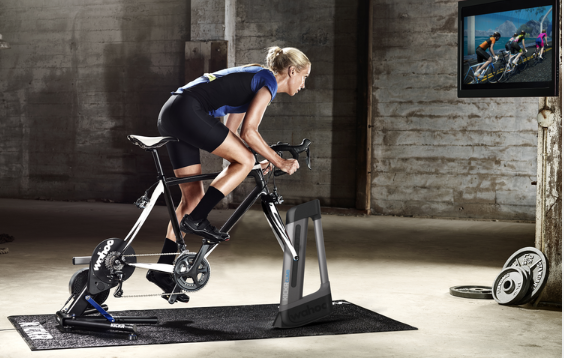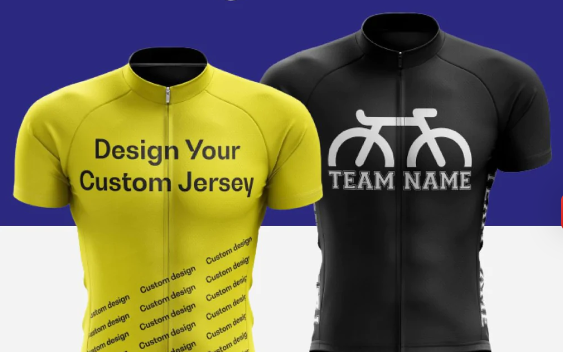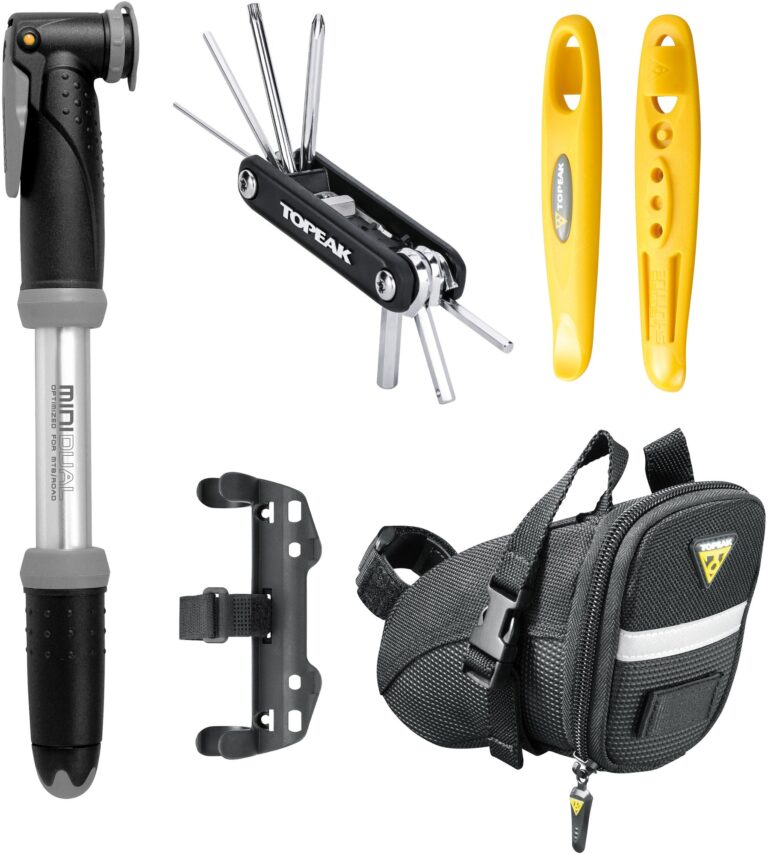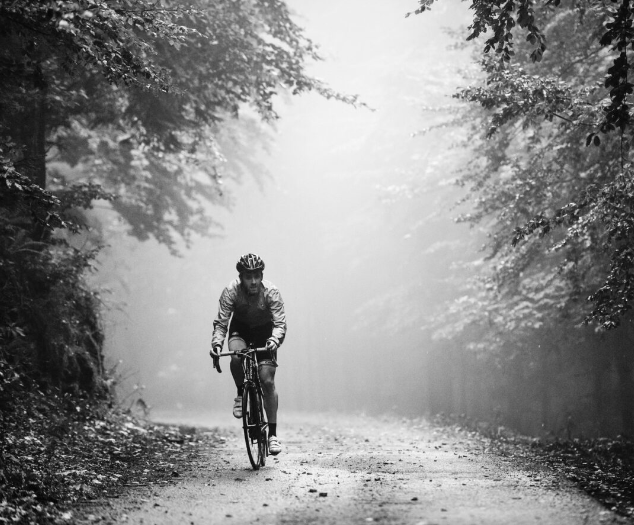Gravel Bike Shoe Buyers Guide
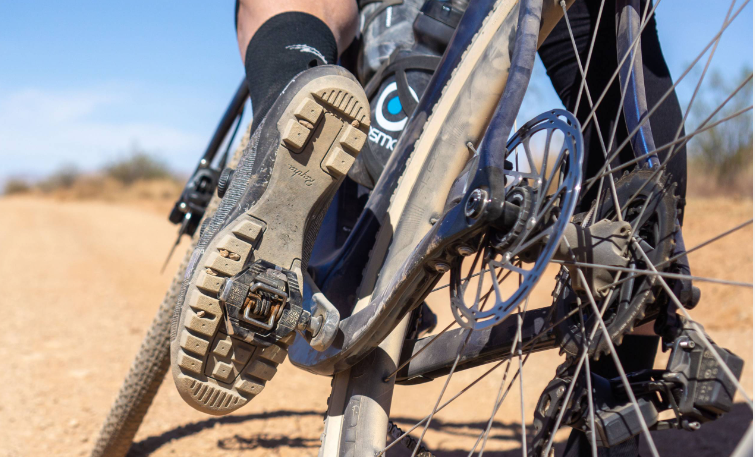
The Comprehensive Guide to Gravel Bike Shoes and Cleats
Gravel biking, a blend of road and off-road cycling, promises adventure. But as any seasoned rider will confirm, a good ride is determined not only by the bike or trail but by the symbiotic relationship between your feet, shoes, and pedals. This gravel bike shoe buyers guide unpacks the complexities of gravel bike shoes and cleats, ensuring you maximize comfort and performance on your rides.
Gravel Bike Shoe DNA: A Fusion of Design
Gravel bike shoes combine the stiffness of road shoes with the robust nature of MTB shoes. These are designed to provide optimal power transfer while being resilient enough to handle unpredictable terrains.
Sole Stiffness: The Foundation of Efficiency

The sole’s stiffness directly impacts power transfer. The stiffer the sole, the better the energy transfer from your feet to the pedals. But where do we strike a balance?
Carbon vs. Nylon: Carbon soles offer the pinnacle of stiffness and lightness but come at a higher price. Nylon, while slightly more flexible, is more affordable and often provides better walking comfort.
Tread and Grip: The Underrated Feature

Unlike road shoes, a gravel shoe requires a reliable grip. Whether you’re navigating slippery rocks or mud, the outsole determines how confidently you can walk. Some even come with provisions for screw-in studs for added traction in extreme conditions.
Closure Systems: More Than Meets the Eye

How a shoe wraps around your foot impacts its comfort and security.
Laces: A classic look, offering even pressure distribution. Velcro Straps: Quick to adjust, but potentially less precise. BOA Dials: Premium, micro-adjustable, and offers a snug fit.
Finding the Perfect Fit

A shoe’s fit can make or break your ride. Tips for ensuring a good fit:
- Always leave a bit of space in the toe box.
- Pay attention to the shoe’s width. Brands vary!
- Test ride: It helps simulate actual riding conditions.
Weather Warriors: Shoes for All Seasons

Your shoe’s design can influence how it performs in different conditions:
Mesh Panels: Excellent in hot weather. Weather-resistant Uppers: Essential for wet terrains.
Demystifying Cleats: More Than Just Metal Pieces
Understanding Cleat Systems

Gravel biking primarily leans on two systems:
2-Bolt System: Perfect for gravel and MTB. Recessed design aids in walking. 3-Bolt System: Popular in road cycling, emphasizing power transfer but less walk-friendly.
Brands that Lead the Charge

- Shimano: From the rugged SPD to the sleek SPD-SL, Shimano covers both off-road and road terrains.
- Crankbrothers: Their mud-friendly designs like Eggbeater are a hit among trail lovers.
- Look: Their 3-bolt systems, though less common in gravel, promise efficient power transfer.
- Time: Makers of the user-friendly ATAC system.
Float: A Blessing for the Knees

Float is the freedom your feet have to move while clipped in. This movement can reduce knee strain and offer a more comfortable ride. Always try different float options to see what’s comfortable.
Maintenance: An Ounce of Prevention…
Cleats can wear out, impacting clip-in efficiency. Regular checks, especially after intense rides, can save you from potential mishaps.
The Science of Cleat Positioning

Positioning can influence power, efficiency, and injury risk. Always aim to start with the cleat under the ball of your foot. From there, minor adjustments can be made based on comfort.
Making the Final Choice
When diving into the world of gravel biking, the choices can be overwhelming. Here’s a step-by-step approach:
- Budget: Define it. It helps narrow choices.
- Research: Read reviews, watch videos, and join forums.
- Visit Local Stores: Try before you buy.
- Prioritize Comfort: A high-end shoe that’s uncomfortable is worthless.
- Consult: Speak with seasoned riders or professionals. Their insights are invaluable.
Conclusion:
Gravel biking is an immersion into the wild, where every pedal stroke tells a story. The right shoes and cleats not only add chapters to this tale but ensure they’re memorable. Whether you’re climbing rugged trails or cruising scenic paths, remember: your ride’s quality begins with your feet. Gear up right, and let every adventure be one for the books.
John
Useful Links
FAQ’s
What cycling shoes to wear on a gravel bike?
Choosing the right cycling shoes for a gravel bike can significantly impact your comfort, efficiency, and overall riding experience. Gravel biking usually combines aspects of both road and mountain biking, so the ideal shoes will be something of a hybrid. Here are some considerations when selecting gravel bike shoes:
- Two-Bolt Cleat System (SPD-style): Mountain bike shoes with a two-bolt cleat system (commonly referred to as SPD) are a popular choice for gravel riders. These cleats are recessed into the sole of the shoe, which makes walking or hiking more comfortable – a common occurrence in gravel biking.
- Tread and Grip: As gravel riding can involve navigating loose and slippery terrain, shoes with a grippy sole can be beneficial. Some gravel-specific shoes feature a combination of a stiff sole for pedaling efficiency and rubber lugs for better grip when off the bike.
- Closure System: Velcro, ratchets, laces, and BOA dials are common closure systems. Some riders prefer traditional laces because they offer even tension across the foot and can be easily replaced. BOA dials and ratchets offer on-the-fly adjustability, while Velcro is simple and effective.
- Breathability and Weather Resistance: Depending on your region and the conditions you ride in, you may want a shoe with more or less ventilation. For wetter climates or seasons, consider shoes with waterproof or water-resistant properties.
- Durability: Gravel riding can be rough on equipment, so look for shoes that are built to last, with robust materials and reinforced areas where wear is most likely to occur.
- Weight and Stiffness: Lighter shoes can make a difference on long rides, and a stiffer sole can offer better power transfer. However, very stiff shoes might not be as comfortable for walking. Find a balance that suits your needs.
- Fit and Comfort: This is arguably the most important consideration. No matter how well a shoe performs in other areas, if it doesn’t fit properly, it won’t be comfortable. Make sure to try on multiple sizes and brands to find the best fit for your foot shape. Consider the width, arch support, and overall volume of the shoe.
Some popular brands that offer gravel or adventure cycling shoes include Shimano, Giro, Specialized, Fizik, and Bontrager, among others. It’s always a good idea to read reviews, ask for recommendations from fellow riders, and if possible, try before you buy.
Finally, don’t forget the importance of good quality cycling socks, which can make a significant difference in comfort, especially on longer rides.
Do you need cycling shoes for gravel bike?
No, you don’t need cycling shoes specifically designed for gravel biking (or any specific type of cycling shoes) to ride a gravel bike. Many riders do prefer them for the benefits they provide, but they’re not a strict necessity. Here’s a breakdown of your options:
- Cycling Shoes with Clipless Pedals: These are the preferred choice for many experienced riders. They offer better power transfer, efficiency, and can prevent your foot from slipping off the pedal. The term “clipless” can be confusing because you actually “clip in” to the pedal. The term derives from the comparison to older “toe clip” systems.
- Advantages: Better foot stability, more efficient power transfer, potential for better pedaling form.
- Disadvantages: Can be harder to disengage quickly (though this becomes second nature with practice), typically more expensive than flat pedals and regular shoes.
- Flat Pedals with Regular Shoes: These are a good choice for those who aren’t comfortable with the idea of being attached to the pedal, or who switch between casual and more intense rides on the same bike.
- Advantages: Easier to get on and off the bike, no special shoes required, more natural feel when walking.
- Disadvantages: Less efficient power transfer, potential for foot to slip off the pedal, especially in wet or muddy conditions.
- Flat Pedals with MTB Specific Flat Shoes: These shoes have a stiffer sole than regular shoes and are designed to grip the pins of flat MTB pedals.
- Advantages: Better power transfer than regular shoes, less likely for foot to slip compared to regular shoes.
- Disadvantages: Still not as efficient as clipless systems, shoes can be costly.
The decision often comes down to personal preference, the type of riding you’re doing, and your comfort level. If you’re just starting out, there’s no harm in using regular shoes with flat pedals. As you ride more and define your preferences, you might decide to switch to a clipless system or MTB-specific flat shoes.
Lastly, remember that safety and comfort are paramount. No matter which setup you choose, make sure you’re comfortable with its operation and feel, especially if you’re tackling technical or challenging terrain.
Can I wear MTB shoes on gravel bike?
Absolutely! In fact, many gravel riders use mountain bike (MTB) shoes for their gravel adventures. Here’s why MTB shoes can be an excellent choice for gravel biking:
- Two-Bolt Cleat System: Most MTB shoes use a two-bolt cleat system (typically SPD), which is compatible with many gravel and mountain bike pedals. The cleats are recessed into the sole, making walking or hiking easier – a common occurrence in gravel biking.
- Tread and Grip: MTB shoes generally have a treaded sole, which offers better traction on loose surfaces or when you need to hike-a-bike. This tread is beneficial for gravel riders who might encounter varied terrain or need to walk sections.
- Durability: MTB shoes are designed to handle rough conditions, making them robust and durable for the demands of gravel riding.
- Comfort and Walkability: As mentioned, the recessed cleat design and treaded soles make MTB shoes more comfortable for walking than typical road shoes, which can be crucial for some gravel rides where you might need to dismount and walk or hike.
- Versatility: If you also enjoy mountain biking, using MTB shoes can allow you to switch between your gravel bike and mountain bike without needing a separate pair of shoes for each.
- Protection: Many MTB shoes offer more protection around the toe box and sides of the feet, which can be beneficial if you’re riding on rugged gravel roads or singletrack.
While MTB shoes are a popular choice for many gravel riders, it’s essential to find a shoe that fits well and meets your specific needs. Some riders might prefer a lighter, more road-oriented shoe, while others might opt for a more robust MTB shoe, depending on the type of gravel riding they’re doing. Always prioritize comfort, fit, and the type of riding you plan to do most often.
How do I know what cycling shoes to buy?
Choosing the right cycling shoes can make a big difference in your riding experience, offering improved power transfer, comfort, and stability over regular shoes. Here’s a step-by-step guide to help you decide which cycling shoes to buy:
- Determine Your Riding Style:
- Road cycling: Look for lightweight, aerodynamic shoes with smooth soles and a three-bolt cleat design.
- Mountain biking (MTB): Opt for more rugged shoes with treaded soles, toe protection, and a two-bolt cleat design.
- Gravel or Adventure: As discussed earlier, many gravel riders prefer shoes that combine features from road and MTB shoes. A two-bolt cleat system is commonly preferred.
- Touring: Comfort over long distances is crucial. Consider shoes that allow for some flex for walking and have recessed cleats.
- Commute or Casual: Consider versatile shoes that you can wear both on and off the bike. MTB shoes or urban cycling shoes might be a good choice.
- Pedal Compatibility: Make sure your shoes are compatible with your pedals. Two common systems are:
- Two-bolt system (like SPD): Used mostly for MTB, touring, and some casual and gravel riders.
- Three-bolt system (like Look or SPD-SL): Common for road cycling.
- Fit and Comfort:
- Size: Your cycling shoes should fit snugly without pinching or creating pressure points but remember that some brands might run smaller or larger.
- Width: Some brands offer wide versions of their shoes.
- Volume: High-arched feet might need a higher volume shoe, while flatter feet might require less volume.
- Try Before Buying: If possible, try them on in a store, especially if you’re new to cycling shoes. It’s crucial to ensure they fit your foot shape.
- Closure System:
- Laces: Provide even tension and a clean look. They are lightweight but not easily adjustable on the go.
- Velcro straps: Simple, effective, and easily adjustable.
- Ratchets and BOA dials: Offer precise adjustment and can be altered while riding.
- Breathability and Weather Resistance: Depending on the climate and weather conditions you usually ride in, choose shoes that offer adequate ventilation for hot days or weather resistance for wet conditions.
- Sole Stiffness:
- Carbon soles are very stiff and offer excellent power transfer but are generally more expensive.
- Nylon or composite soles are more flexible, which might be more comfortable for walking but may sacrifice some power transfer.
- Budget: Cycling shoes come in a wide range of prices. More expensive shoes usually offer benefits like lighter weight, stiffer soles, or better ventilation, but many mid-range shoes offer excellent performance for their price.
- Aesthetics: While function should be your primary concern, you might also have a preference regarding the look and color of your shoes.
Lastly, read reviews and seek advice from more experienced riders or local bike shop staff. They can provide insights based on personal experience or feedback from other customers.
Can I ride my gravel bike wearing road shoes?
Yes, you can ride your gravel bike wearing road shoes, but there are some considerations and potential drawbacks to be aware of:
- Pedal Compatibility: First and foremost, ensure that your road shoes are compatible with the pedals on your gravel bike. Road shoes typically use a three-bolt cleat system (like Look or SPD-SL), while many gravel bikes might be equipped with two-bolt SPD-style pedals. If your gravel bike uses a three-bolt system or if you’re willing to switch out the pedals, then compatibility isn’t an issue.
- Walking/Hike-a-Bike: Road shoes have smooth and very stiff soles, making them challenging and sometimes slippery when walking, especially on loose gravel or uneven terrain. Gravel rides can sometimes involve sections where you need to dismount and walk. In such cases, road shoes wouldn’t be the ideal choice.
- Dirt and Debris: The cleats on road shoes are exposed, which can cause issues if they become clogged with mud or debris, a more common occurrence on gravel rides than on road rides. This can make clipping in and out more challenging.
- Protection and Durability: Road shoes are generally lighter and less robust than MTB or gravel-specific shoes. This means they might not provide as much protection against rocks or debris, and they may wear out faster if used regularly on rugged gravel routes.
- Comfort: Road shoes are optimized for pedaling efficiency on smooth tarmac, so they might not offer the same comfort on the variable and sometimes rough terrain of gravel routes, especially on longer rides.
While it’s certainly possible to use road shoes on a gravel bike, many riders opt for MTB or gravel-specific shoes because of the advantages they offer in terms of walkability, protection, and versatility. However, if you’re going on a gravel ride that’s mostly smooth, without much walking, and you’re comfortable in your road shoes, they can work just fine. Always prioritize your safety and comfort based on the conditions you expect to encounter.
Can I ride my gravel bike without gravel shoes?
Absolutely! While there are cycling shoes specifically designed for gravel riding, it’s not mandatory to use them. Your choice of footwear largely depends on your pedals, comfort preferences, and the type of riding you’re doing. Here are some options:
- Regular Shoes with Flat Pedals: If your gravel bike has flat pedals, you can ride with almost any type of shoe. Just make sure they have a reasonably grippy sole for stability. This is an excellent option for casual rides, those new to cycling, or riders who prioritize being able to walk normally when off the bike.
- MTB Shoes with Clipless Pedals: Many gravel riders use mountain bike (MTB) shoes with SPD (or similar) pedals. MTB shoes have a recessed cleat area, making walking easier. The treaded sole also provides grip when off the bike, which can be useful on gravel routes where you might have to walk sections.
- Road Shoes with Road Clipless Pedals: You can also use road cycling shoes on a gravel bike. They typically have a smoother sole and an external cleat (like Look or SPD-SL). While they offer efficient power transfer, they’re not ideal for walking due to the protruding cleat and stiff sole. If you’re on routes where you don’t expect to walk much, they can be suitable.
- Urban or Commuter Cycling Shoes: These are a hybrid option, designed for both cycling efficiency and walking comfort. They often use a two-bolt cleat system (like SPD) but look and feel more like regular shoes.
- Gravel-Specific Shoes: While you’ve pointed out you might not use these, it’s worth noting that gravel-specific shoes combine elements of both road and MTB shoes, aiming to offer a balance of pedaling efficiency and off-bike comfort.
When deciding on footwear, consider:
- Pedal compatibility: Ensure your shoes and pedals are compatible.
- Type of terrain: More rugged and technical terrains might warrant a shoe with better grip and protection.
- Walking: If you’ll be dismounting and walking regularly, prioritize shoes that are comfortable off the bike.
- Ride Duration: Longer rides might require shoes that offer better support and power transfer.
Ultimately, the best shoe is one that fits well, is suitable for your type of riding, and meets your comfort and performance needs. Whether that’s a gravel-specific shoe, an MTB shoe, or even a regular sneaker, it’s all about what works best for you.

